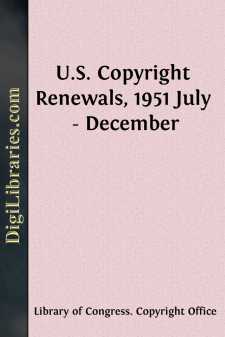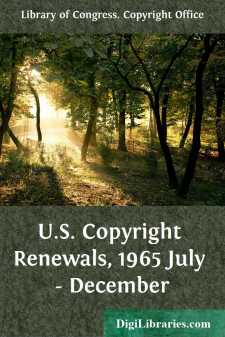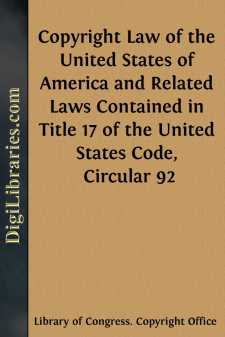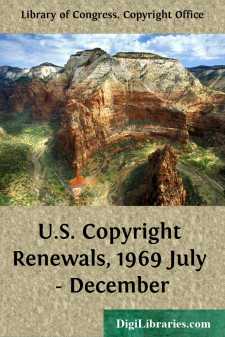Categories
- Antiques & Collectibles 13
- Architecture 36
- Art 48
- Bibles 22
- Biography & Autobiography 813
- Body, Mind & Spirit 142
- Business & Economics 28
- Children's Books 16
- Children's Fiction 13
- Computers 4
- Cooking 94
- Crafts & Hobbies 4
- Drama 346
- Education 46
- Family & Relationships 57
- Fiction 11829
- Games 19
- Gardening 17
- Health & Fitness 34
- History 1377
- House & Home 1
- Humor 147
- Juvenile Fiction 1873
- Juvenile Nonfiction 202
- Language Arts & Disciplines 88
- Law 16
- Literary Collections 686
- Literary Criticism 179
- Mathematics 13
- Medical 41
- Music 40
- Nature 179
- Non-Classifiable 1768
- Performing Arts 7
- Periodicals 1453
- Philosophy 64
- Photography 2
- Poetry 896
- Political Science 203
- Psychology 42
- Reference 154
- Religion 513
- Science 126
- Self-Help 84
- Social Science 81
- Sports & Recreation 34
- Study Aids 3
- Technology & Engineering 59
- Transportation 23
- Travel 463
- True Crime 29
Reproduction of Copyrighted Works By Educators and Librarians
Categories:
Description:
Excerpt
The documentary materials collected in this booklet deal with
reproduction of copyrighted works by educators, librarians, and
archivists for a variety of uses, including:
+ Reproduction for teaching in educational institutions at all levels;
and
+ Reproduction by libraries and archives for purposes of study,
research, interlibrary exchanges, and archival preservation.
The documents reprinted here are limited to materials dealing with
reproduction. Under the copyright law, reproduction can take either of
two forms:
+ The making of copies: by photocopying, making micro-form
reproductions, videotaping, or any other method of duplicating
visually-perceptible material; and
+ The making of phonorecords: by duplicating sound recordings, taping
off the air, or any other method of recapturing sounds.
The copyright law also contains various provisions dealing with importations, performances, and displays of copyrighted works for educational and other noncommercial purposes, but they are outside the scope of this booklet. You can obtain a copy of the statute and information about specific provisions by writing to the Publications Section, LM-455, Copyright Office, Library of Congress, Washington, D.C. 20559-6000.
*A Note on the Documents Reprinted*
The documentary materials in this booklet are reprints or excerpts from six sources:
1. The Copyright Act of October 19, 1976. This is the copyright law of the United States, effective January 1, 1978 (title 17 of the United States Code, Public Law 94-553, 90 Stat. 2541).
2. The Senate Report. This is the 1975 report of the Senate Judiciary
Committee on S. 22, the Senate version of the bill that became the
Copyright Act of 1976 (S. Rep. No. 94-473, 94th Cong., 1st Sess.,
November 20 (legislative day November 18,1975)).
3. The House Report. This is the 1976 report of the House of Representatives Judiciary Committee on the House amendments to the bill that became the Copyright Act of 1976 (H.R. Rep. No. 94-1476, 94th Cong., 2d Sess., Sep-tember 3,1976).
4. The Conference Report. This is the 1976 report of the "committee of conference on the disagreeing votes of the two Houses on the amendments of the House to the bill (S. 22) for the general revision of the Copyright Law" (H.R. Rep. No. 94-1733, 94th Cong., 2d Sess., September 29,1976).
5. The Congressional Debates. This booklet contains excerpts from the Congressional Record of September 22, 1976, reflecting statements on the floor of Congress at the time the bill was passed by the House of Representatives (122 CONG. REC. H 10874-76, daily edition, September 22,1976).
6. Copyright Office Regulations. These are regulations issued by the Copyright Office under section 108 dealing with warnings of copyright for use by libraries and archives (37 Code of Federal Regulations Sec. 201.14).
Items 2 and 3 on this list—the 1975 Senate Report and the 1976 House Report—present special problems. On many points the language of these two reports is identical or closely similiar. However, the two reports were written at different times, by committees of different Houses of Congress, on somewhat different bills. As a result, the discussions on some provisions of the bills vary widely, and on certain points they disagree.
The disagreements between the Senate and House versions of the bill itself were, of course, resolved when the Act of 1976 was finally passed....












